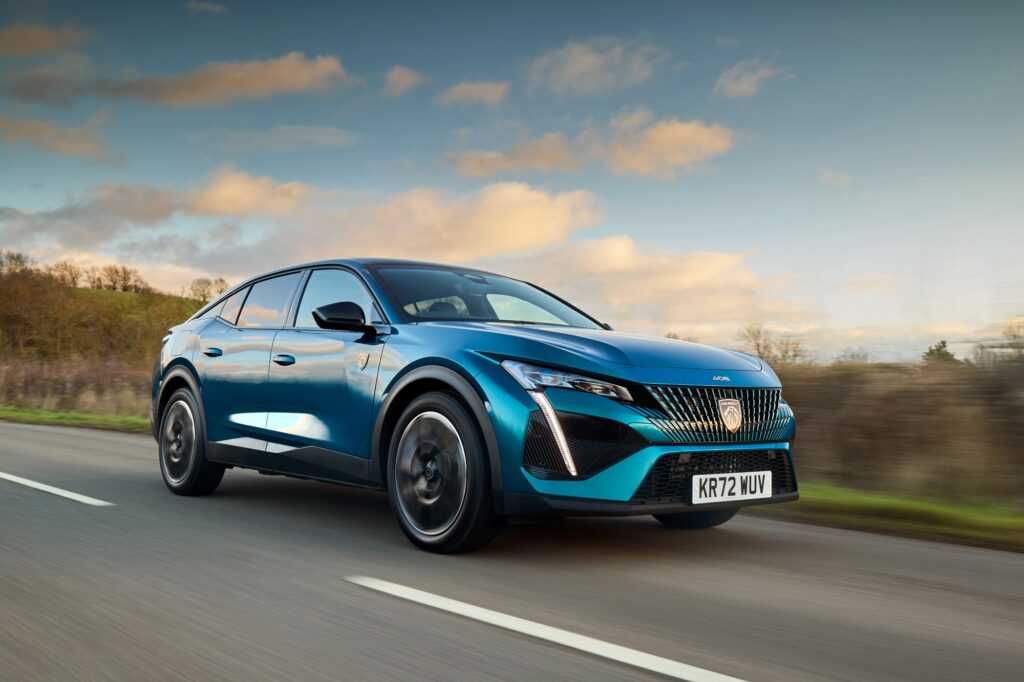Growth underpins UK LCV market in March
17 April 2023

Light-commercial vehicle (LCV) registrations and used-vehicle transactions in the UK continued their positive trend in March. Andy Picton, chief commercial vehicle editor at Glass’s (part of Autovista Group) analyses the latest data.
The UK’s new-LCV market grew for the third consecutive month in March, rising 17.3% year on year to 47,634 units. With 87,272 registrations in the first three months of the year, the country saw a 17.4% increase on the same period in 2022 (74,344 units) and the best first quarter since 2021 (97,356 units).
Registrations in the pickup segment leapt by 29.3% to 5,762 units, while vans weighing 2-2.5 tonnes gross vehicle weight (GVW) rose 66.3% to 9,276 units. Those between 2.5 and 3.5 tonnes GVW took a market share of 64.3% of all LCVs registered, while recording a 4.9% rise in registrations (30,651 units). Compared with March 2022, vans below two tonnes GVW fell 24.6% to just 681 units.
In brand sales, Ford demonstrated dominance in the UK, registering more LCVs than any other manufacturer during the month. The Transit Custom, Transit and Ranger took first, second and third place respectively in terms of total registrations. The Transit Connect finished eighth, registering 2,140 units. Stellantis saw the Citroen Berlingo achieve fifth place, the Vauxhall Vivaro ninth (2,092 units) and the Peugeot Partner tenth (1,833 units). Volkswagen claimed fourth with the Transporter, the Renault Trafic was sixth with 2,221 units and the Mercedes-Benz Sprinter seventh with 2,168 units.
New-plate month
Registrations climbed last month due in part to the introduction of new plates in the UK, but also because of a particularly poor March in 2022 when protracted supply chain shortages hindered deliveries. Despite the rise in demand, the first quarter was down 15.1% compared to the same period in pre-COVID 2019 (102,743 units). Although supply-chain challenges will ease this year, a full recovery is unlikely until 2024.
There was a sizeable 32.7% increase in battery-electric van registrations last month, with 2,534 units joining the road, up 625 units on twelve months ago. Registrations of battery-electric vans in the first quarter increased 4.6% year on year, with a market share of 5.1%. However, this was a fall on the 5.8% share the drivetrain held in 2022.
Battery-electric vans are expected to see further growth this year, but to achieve the SMMT’s 28,000-unit projection, a dedicated LCV-suitable charging network must be implemented. The Zero-Emission Mandate is due to come into force at the beginning of 2024, meaning there must be a rapid increase in the sale of battery-electric vans and charging infrastructure.
Values strengthen again
Demand in the used-LCV market remained positive, with values strengthening again. As fleet and leasing companies receive new models, allowing them to de-fleet older ‘pandemic-worn’ vehicles, stock levels are healthy in the used market.
However, in the three years since the beginning of the COVID-19 pandemic, the age of the van parc has grown. Many buyers are now changing their stock profile and sourcing older vehicles with higher mileages. Average sales prices have increased by nearly 3.3% since the end of last year, but have fallen 5.6% since last March during the worst of the stock shortages.
Healthy and robust market
Glass’s observed a healthy and robust used-LCV market in March, with a huge rise in transactions. Sales increased by just under 11% versus February, with average sale prices up 0.8% over the same period. However, transactions were 4.1% lower than in March last year, with average prices down 5.6% on this period.
As with previous months, the most popular used segment was the medium van. These models accounted for 38.3% of all auction sales, while 4x4 stock was once again the least popular (15%) but attracted the strongest average sales prices of £14,803 (€16,778), £1,001 higher than in February.
The average age of vehicles sold during March fell by 0.2 months to 82 months. Meanwhile, the average mileage increased by 0.4% to 84,548 miles (136,066km). This is nearly 3,200 miles higher than 12 months ago. Large panel vans unsurprisingly covered more distance than any other model type, averaging 93,579 miles, up 29 miles on February.
At auction, first-time conversion rates for March fell 3.2% to 82.5% overall, with all segments recording a decrease. The continued shortage of small vans in the used market has meant this sector returned the best conversion rate of 86.4% (down 2.9% on February). Medium vans recorded 82.1% (down 4.1%), 4x4 pickups 83% (down 2.5%) and large panel vans 76.9% (down 3%).
Used vehicles observed for sale in the wholesale market in March decreased by 1.9% to almost over 39,100 units. 50.1% of all vehicles on sale were valued at £20,000 or more, while 33.4% were on sale for between £20,000 and £10,000. At the lower end of the market, 12.5% of all vehicles were on sale for between £10,000 and £5,000. Those on sale for less than £5,000 reduced slightly from 4.2% to 4% of the overall market.



